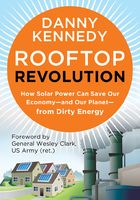
The Public Demand for Clean, Local Energy
Whether Americans will see through King CONG’s smoke and mirrors and clever communications is another question. We have to take this battle seriously because CONG and its industry associations could hamper our momentum in bringing what our country needs and what an ever-growing number of our citizens want: clean, local energy. CONG intends its long and sustained campaign to frame solar as at best some “future technology” and at worst a total failure. Nothing could be further from the truth: solar power is ready right now. It’s what all the satellites in space use to operate, beaming bits and bytes of data down to Earth for our communications and entertainment. And there are new advances in solar technology every day.
More importantly, millions of people globally are now using solar power in their homes. With the advent of creative customer finance solutions, more US businesses and households became solar-power plants for themselves in the past 10 years than in the previous three decades. One of the best competitors of the company I helped found, Sungevity, just launched SolarStrong, a billion-dollar program with the US military and Bank of America to put solar panels on the homes of 300,000 US servicemen and -women—almost doubling the solar-home stock in America within five years.
Solar cells, a high-performance technology set, produce electricity that each year costs less and less compared with electricity derived from coal, oil, nukes, and gas, which costs more each year. Before long we could all live in a country that’s largely powered by solar panels on the skins of our buildings and the surfaces of our vacant lands—and maybe even on the surfaces of our roads.
Lest you think I and my fellow solar entrepreneurs are biased because we’ve helped build businesses in this space, here are some hard numbers from the US Energy Information Administration from around the same time some pundits were striking up the band to play the dirge for the solar industry: US solar-generated electricity expanded in 2011 by 45 percent over the first three quarters of 2010. In comparison, natural-gas electrical generation rose only 1.6 percent, while nuclear output declined by 2.8 percent and coal-generated electricity dropped by 4.2 percent.
Solar is on the rise across the United States. In 2010, 16 states installed more than enough to supply approximately 2,000 homes, compared with only four states in 2007. California saw huge increases in usage, crossing the head-spinning 1-gigawatt marker on solar rooftops—a level only five countries have achieved. (To put this number into perspective, 1 gigawatt is the capacity of a whole nuclear power plant, which could power 200,000 homes!) But that’s just a start for this form of power generated from solar panels.
Worldwide the solar industry is also taking off in a big way: China enjoyed such a burst of solar power that it recalibrated the target in its twelfth five-year plan to 15 gigawatts installed by 2015—50 percent higher than the previous target and 50 percent more than we expect to have in the United States.
The big surprise to me personally, as someone in the solar business, is that China caught up to the United States in installed solar panels in 2011, which I had not expected to happen for years. Five years earlier there were almost none in all of China—and the United States had a 50-year head start.
On the subcontinent, Pakistan has passed the point where solar power is cheaper than a lot of electricity that comes from diesel generators, and India is upping its target from 20 to 33 gigawatts to be installed by 2020.
Germany produced more than 18 billion kilowatt-hours of solar electricity in 2011. That’s 60 percent more than it produced the year before and is enough to supply 5 million households for a year. In December 2011 the country installed 3 gigawatts of solar panels in just one month—enough capacity to power 600,000 homes!
By any measure, the world is experiencing a solar boom. Momentum is building, and we have to keep it going for the benefit of our economy and our planet’s longevity. To do that we have to combat Dirty Energy’s efforts with our own, and the time is now.